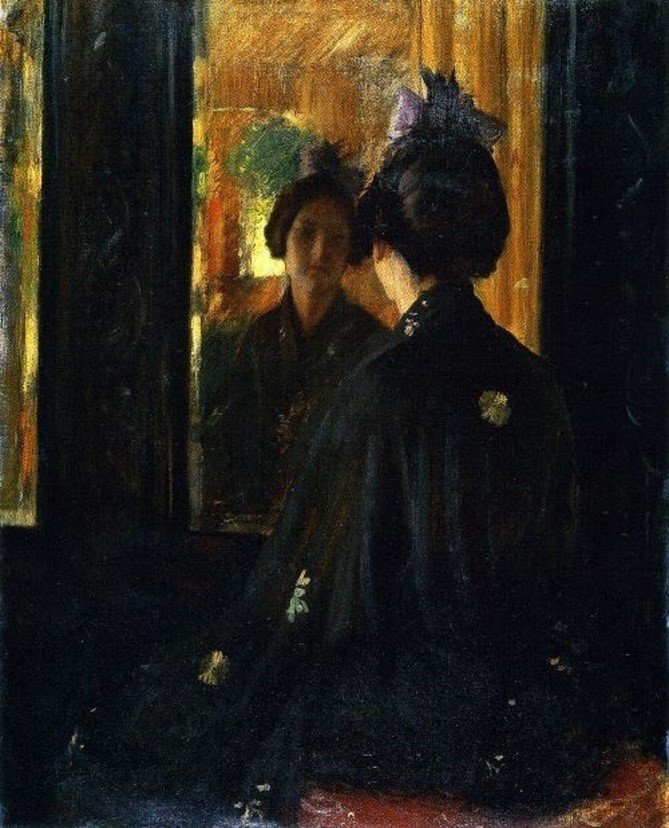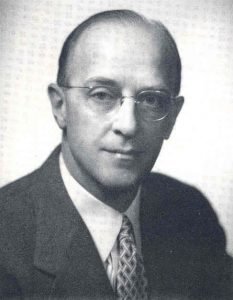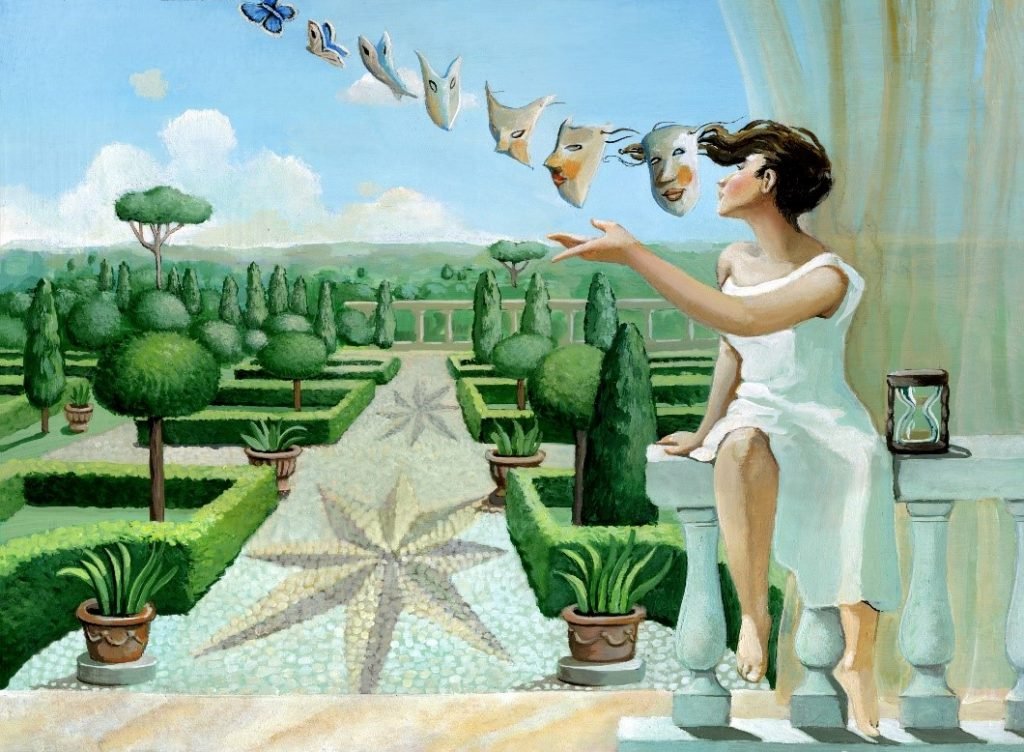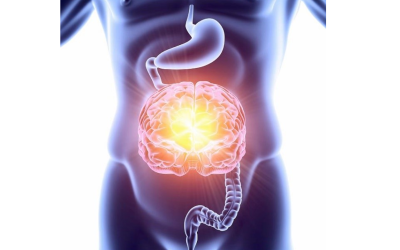To access the full case study (over 10,000+ words), please join the SPE/NHSS Membership Program and you may then download it for free. Read the first 2500 words below:
The art of Spiritual PhytoEssencing (SPE) utilizes customized combinations of essential oils for deep soul-level healing work, which involves what I refer to as archetypal blending. In SPE, the term archetype refers to a unique intangible construct rooted within the soul that generates a characteristic pattern of perceptible emotional and physical expressions. In turn, these expressions—such as temperament, personality traits, reactional tendencies and diverse symptoms of dysfunction (e.g., anxiety, depression, chronic fatigue, stomach weakness, etc.)—are considered to be archetypal images.
The basic premise of Spiritual PhytoEssencing is: In order to be able to ameliorate soul-level disharmony, an essential oil blend must engage with the archetypes rooted within the fabric of a person’s soul rather than with the archetypal images than manifest as emotional and physical symptoms. While oils are not selected to directly treat specific emotional and physical symptoms, these symptoms are used to identify their underlying archetypal origins.
In Spiritual PhytoEssencing, an interview (called an anamnesis – Latin for recollection) of the person for whom a custom blend is to be prepared is conducted, which enables the blender to identify the constitutional themes and the primary archetypal components of that individual’s real self (that aspect of the self-structure that is a direct extension of one’s unique, eternal soul-nature). These archetypes and themes are then proficiently matched with corresponding essential oils.
The principal tool for beginning to assemble a list of potential essential oil candidates for inclusion in a custom blend (known in SPE as the possibles list) is Berkowsky’s Spiritual PhytoEssencing (SPE) Repertory of Essential Oils, a reference manual used to help a blender identify potentially relevant essential oils for inclusion in a customized essential oil blend. The Repertory is an index of constitutional archetypes and qualities, reactional tendencies, mental, emotional and physical symptoms, dreams, and more.
I began developing the art of Spiritual PhytoEssencing (SPE) in the 1990′s. Having studied and taught scientific disciplines for many years, I naturally wanted SPE to be a very organized and disciplined approach to soul-level healing work.
It is my strong belief that, while the soul cannot be quantitatively and qualitatively assessed using conventional methods, the soul’s abstract nature requires that the imaginal consciousness employed to observe and address it be kept within constructive limits via a highly organized methodology. Lacking such organization, soul-level healing work commonly devolves into unreliable subjective speculation and ineffective therapeutics.
When I developed the SPE interview, data interpretation and blending protocol, I adapted some of its central features from classical homeopathy; another very creative yet highly disciplined healing art, which I have practiced for many years. One of these features is the development and use of a repertory.
Below, I will demonstrate the use of my SPE Repertory of Essential Oils. However, its use must first be framed within the context of a brief discussion of SPE’s theoretical premise and methodology.
The ability to perform an interview that reveals the archetypal construct of someone’s inner nature, and then analyze the interview data to identify the central operative archetypal components within that person’s existential dynamics, is a key factor in the development of an accurately rendered “portrait in oils.”
A SPE custom blend constitutes a plant-soul analogue of a given individual’s “unique soul-portrait.” In other words, the blender is creating a soul-portrait in essential oils. It is this customized correspondence to the soul-rooted real self that encourages an individual’s soul to accept the homogeneous blend of plant-souls as a “reorganizing nucleus.”
When the ideal self (the compensated state a person constructs when (beginning as a very young child) one is socially conditioned to believe that one’s real self is not well-suited for dealing with the harsh realities of life and achieving success). Then the ideal self becomes dominant and an individual only gets fleeting glimpses of his or her authentic soul nature.
The real self continues to exert a strong influence, but that is primarily experienced as sadness, discouragement, resentment and other negative emotions arising from the suppression and repression of the real self. In the course of this suppression and repression, one’s memory of the shape and image of one’s true soul nature fades. It is as if the real self is a boat that has become unmoored, slowly drifts out to sea, and disappears over the horizon.
The SPE custom blend: a portrait in oils of the real self, serves as a mirror within which the real self can, for the first time in a very long while, gaze upon its unobscured image. It is this casting of a reflection of the true shape of a person’s soul that enables the custom blend to unlock the moribund potential within an analogous human-soul.

When a person can once again “see” his or her true self, an overwhelming urge arises to return to oneself. As the true self and the higher soul share the same spiritual root, there is also a simultaneous flaring-up of the natural desire of the soul to establish ongoing intimate contact with its divine source. Ultimately, reorientation regarding the real self and the spiritual world are central to the amelioration of the soul level central disturbance that often ripples outward and is expressed as emotional and physical disharmony. In turn, this amelioration potentiates wholeness of being.

The great psychologist Dr. Carl Rogers (whose ideas are one of the foundation stones in the theoretical context of SPE) viewed an individual whose life was characterized by wholeness of being as a “fully functioning person.” He defined a fully functioning person as someone who:
- Has abandoned a reactive tendency toward reflexive defensiveness in favor of a growing openness to experience.
- No longer has a need for habitual subception (a defense mechanism that involves employment of unconscious strategies to prevent a troubling stimulus from entering consciousness).
- Has an increasingly existential lifestyle – living each moment fully – not distorting a moment to fit a socially conditioned self-concept, but instead allowing spontaneous reactions and self-concept to emerge from the experience of that moment.
- Exhibits increased organismic trust – trusting one’s own judgment and one’s ability to be flexible in react in a manner that is organically suited for each moment. As opposed to relying on existing codes and social norms, this degree of self-trust enables a person to be fully open to experiences because of established confidence in one’s own organic sense of right and wrong.

Demonstration of SPE Case-Study Analysis: One of Carl Jung’s Cases

In the following section, I will demonstrate the unique SPE art of case-study analysis using one of the cases Carl Jung (whose ideas are another of the foundation stones in the theoretical context of SPE) describes in his book Memories, Dreams, Reflections (1961). I chose this case (c. 1920s) for the purposes of this SPE case-study analysis demonstration for two reasons. First, it is very brief and thus, ideal for an article. Secondly, it is rare among well-known, psychology case-studies in that it features an interface between the psyche and spirit. Thus, it merges neatly into the stream of SPE case-study analysis.
I begin below with Jung’s recounting of the case (in italicized text).
“I well recall the case of a Jewish woman who had lost her faith. It began with a dream of mine in which a young girl, unknown to me, came to me as a patient. She outlined her case to me, and while she was talking, I thought, ‘I don’t understand her at all. I don’t understand what it is all about.’ But suddenly it occurred to me that she must have an unusual father complex. That was the dream.
For the next day, I had down in my appointment book a consultation for four o’clock. A young woman appeared. She was Jewish, daughter of a wealthy banker, pretty, chic, and highly intelligent. She had already undergone an analysis, but the doctor acquired a transference to her and finally begged her not to come to him anymore, for if she did, it would mean the destruction of his marriage.

The girl had been suffering for years from severe anxiety neurosis, which this experience naturally worsened.
I began with an anamnesis [recollection; case-history], but could discover nothing special [significant]. She was well-adapted, Westernized Jewess, enlightened down to her bones.
At first, I could not understand what her trouble was. Suddenly my dream occurred to me, and I thought: ‘Good Lord, so this is the little girl of my dream.’
Since, however, I could detect not a trace of a father complex in her, I asked her, as I am in the habit of doing in such cases, about her grandfather. For a brief moment she closed her eyes, and I realized at once that here lay the heart of the problem.
I therefore asked her to tell me about this grandfather and learned that he had been a rabbi and had belonged to a Jewish sect. ‘Do you mean the Hasidim?’ I asked. She said “Yes.”
I pursued my questioning: ‘If he was a rabbi, was he by any chance a tsaddik?’
[The Hebrew word tsaddik means a righteous person of outstanding virtue and piety.]
‘Yes,’ she replied, ‘it is said that he was a kind of saint and also possessed second sight. But that is all nonsense. There is no such thing!’
With that I had concluded the anamnesis and understood the history of her neurosis. I explained to her: “Now I am going to tell you something that you may not be able to accept. Your grandfather was a tsaddik. Your father became an apostate [a person who renounces a religious belief or principle] to the Jewish faith. He betrayed the secret and turned his back on God. And you have your neurosis because the fear of God has got into you.” That struck her like a bolt of lightning.
The following night I had another dream: “A reception was taking place in my house, and behold, this girl [the young Jewish woman] was there too. She came up to me and asked: “Haven’t you got an umbrella? It is raining so hard.” I actually found an umbrella, fumbled around with it to open it, and was on the point of giving it to her. But what happened instead? I handed it to her on my knees as if she were a goddess.
I told this dream to her, and in a week the neurosis had vanished. The dream had shown me that she was not just a superficial little girl, but that beneath the surface were the makings of a saint.
She had no mythological ideas, and therefore the most essential feature of her nature could find no way to express itself. All her conscious activity was directed toward flirtation, clothes and sex, because she knew nothing else. She knew only the intellect and lived a meaningless life.
In reality, she was a child of God whose destiny was to fulfill His secret will. I had to awaken mythological and religious ideas in her, for she belonged to that class of human beings of whom spiritual activity is demanded. Thus, her life took on a meaning and no trace of the neurosis was left.
In this case, I had applied no ‘method,’ but had sensed the presence of the numen [divine power or spirit].
My explaining this to her had accomplished the cure. Method did not matter here; what mattered was the ‘fear of God.’”
SPE Analysis of Jung’s Case
As discussed above, SPE focuses on archetypal blending. Accordingly, the first task in SPE case-study analysis is to translate the data into archetypes. In SPE, the term archetype refers to a unique intangible construct (i.e., deep form) of the soul that generates a pattern of characteristic potentials. Accordingly, particular identifiable patterns of emotions and physical predispositions are viewed as tangible expressions of underlying psycho-spiritual archetypes. In turn, these expressions are considered to be archetypal images.
Spiritual PhytoEssencing case-study analysis largely depends upon the ability to perceive archetypal modes, and trace these back to specific archetypes. An archetypal mode (a type of archetypal image) is a specific combination of selected perceptual filters (how the individual evaluates his life experiences and then perceives them in his or her consciousness) employed by the ego-mind and a particular psychosocial role (persona) that the ego activates in relation to everyday experiences. Archetypal modes are essentially a combination of behavioral and reactional modes.
The primary archetypes in SPE include: astrological signs, miasms, chakras, elements (e.g., Earth, Water), kabbalistic Tree of Life vessels and directions (e.g., North type, East type, etc.). After I studied Jung’s case, I decided, given the limited amount of information he provided, as well as the case’s interface of psyche and spirit, that the identification of the primary operative kabbalistic Tree of Life vessels would provide the best archetypal picture of the case subject, and the clearest pathway to essential oils selection.
Tree of Life Vessels: Soul Archetypes
The Tree of Life is a type of divine computer that transduces divine qualities that exist in potentia in the spirit realm into qualities that are active within the souls of living beings.
A central feature of Lurianic Kabbalism (the kabbalistic system based upon the teachings of Rabbi Isaac Luria, a great 16th century kabbalist) is the concept of tsimtsum: God’s withdrawal from the central point of the spirit realm that resulted in a Vacated Space in which finite Creation could unfold.
Rabbi Luria described an initial, pre-creation state of Infinite light, within which there was no place for anything finite to exist. Before creating any worlds, God withdrew Infinite Light completely from a small area, resulting in a totally lightless void. Only then did God extend into this void a metered line of Light from the encompassing Infinite Light, and, via this divine energy wave, generated an innumerable series of worlds.

This metered light was filtered into the created universe via the mechanism of the Tree of Life and its sefirot (aka vessels). In The Thirteen Petaled Rose, the brilliant thinker and kabbalist Rabbi Adin Steinsaltz writes:
“The sefirot are fundamental forces or channels of divine flow. They are the means of divine revelation, are related to the primary divine light as a body is related to the soul; they are in the nature of an instrument or a vehicle of expression, as though a mode of creation in another dimension of existence.
Our world depends on the proper function of the sefirot; and when they are interfered with, the system is disrupted, and the disrupting factors themselves suffer the consequences.
Just as they do in the world, the sefirot exist in the human soul; and from their mutual interrelations are manifested all the broad span of thoughts, feelings and experiences of the human being.”
So now, let’s proceed with the translation of Jung’s case into the archetypes used in SPE. You will note below that I highlight specific key phrases within the body of Jung’s detailing of the case. These highlighted phrases serve as the anchor points for my archetypal analysis. When I analyze case-study data, I divide that data into sections and then interpret each section. I label my initial analysis of each section as “analytical thoughts.” Essentially, I am thinking out loud to help my mind work its way into the inner environs of the case.
To continue reading the full case study (over 7500 words more), please join the SPE/NHSS Membership Program and you may then download it for free.







